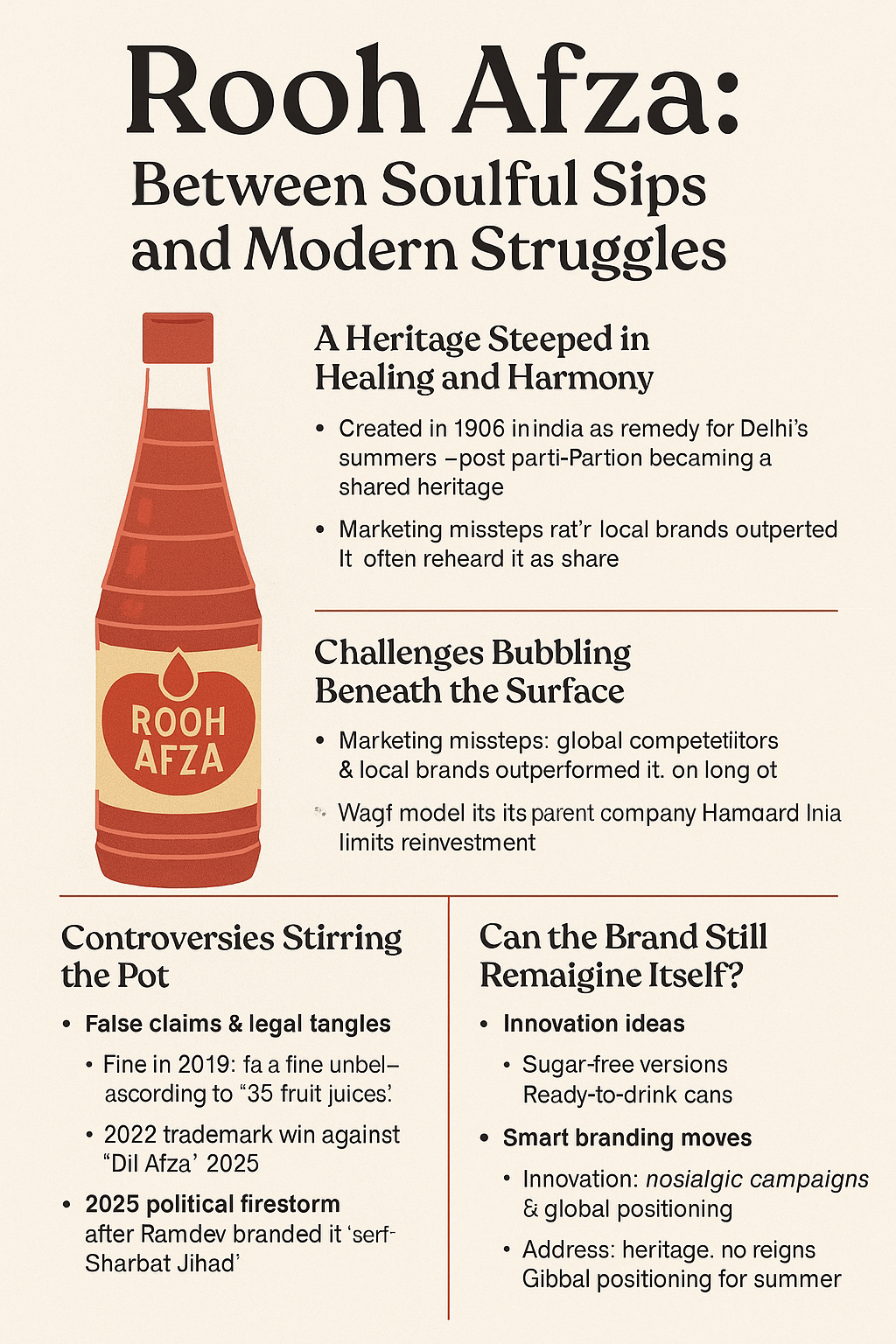Rooh Afza: Between Soulful Sips and Modern Struggles

Rooh Afza: Between Soulful Sips and Modern Struggles A deep dive into tradition, turbulence, and the taste of legacy A Drink That’s More Than Just a Drink Come summer—or the holy month of Ramadan—there’s one ruby-red syrup that South Asians instinctively reach for: Rooh Afza . Born in 1906 in Delhi’s bylanes, this iconic herbal concoction is far more than a thirst-quencher—it’s nostalgia bottled, a cultural relic, and lately, a subject of heated debates. But how does a sherbet survive (and stumble) through a century of shifting palates, politics, and market trends? Let’s unpack the layers behind this syrupy staple. 1. A Heritage Steeped in Healing and Harmony Roots in Unani Wisdom Created by Hakim Hafiz Abdul Majeed , a Unani physician, Rooh Afza was crafted as a remedy for Delhi’s blazing summers—designed to cool the body and spirit alike. With ingredients like rose, kewra, mint, watermelon, and vetiver, its name means “Soul Refresher.” A Subcontinent’s Shared ...
